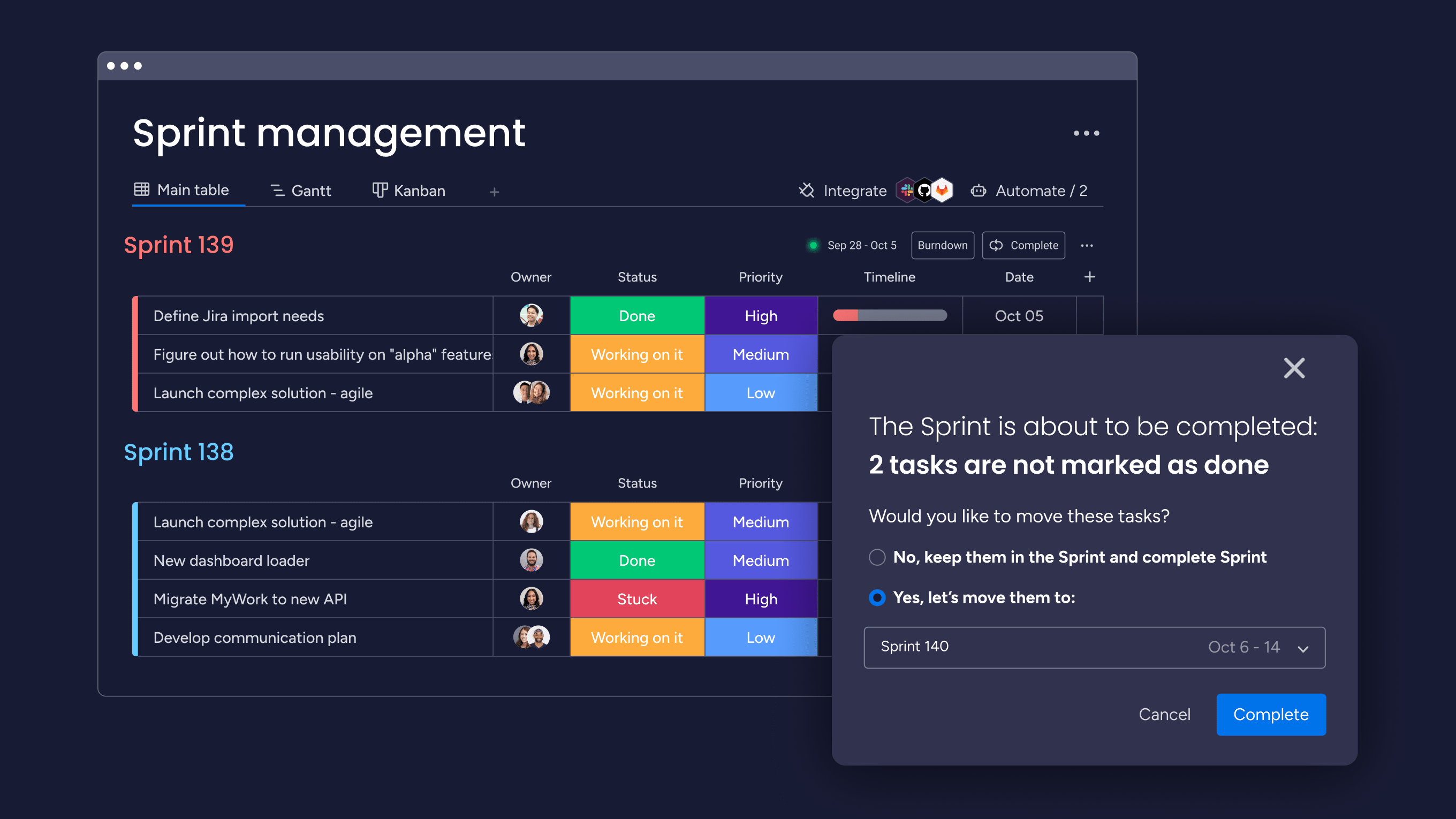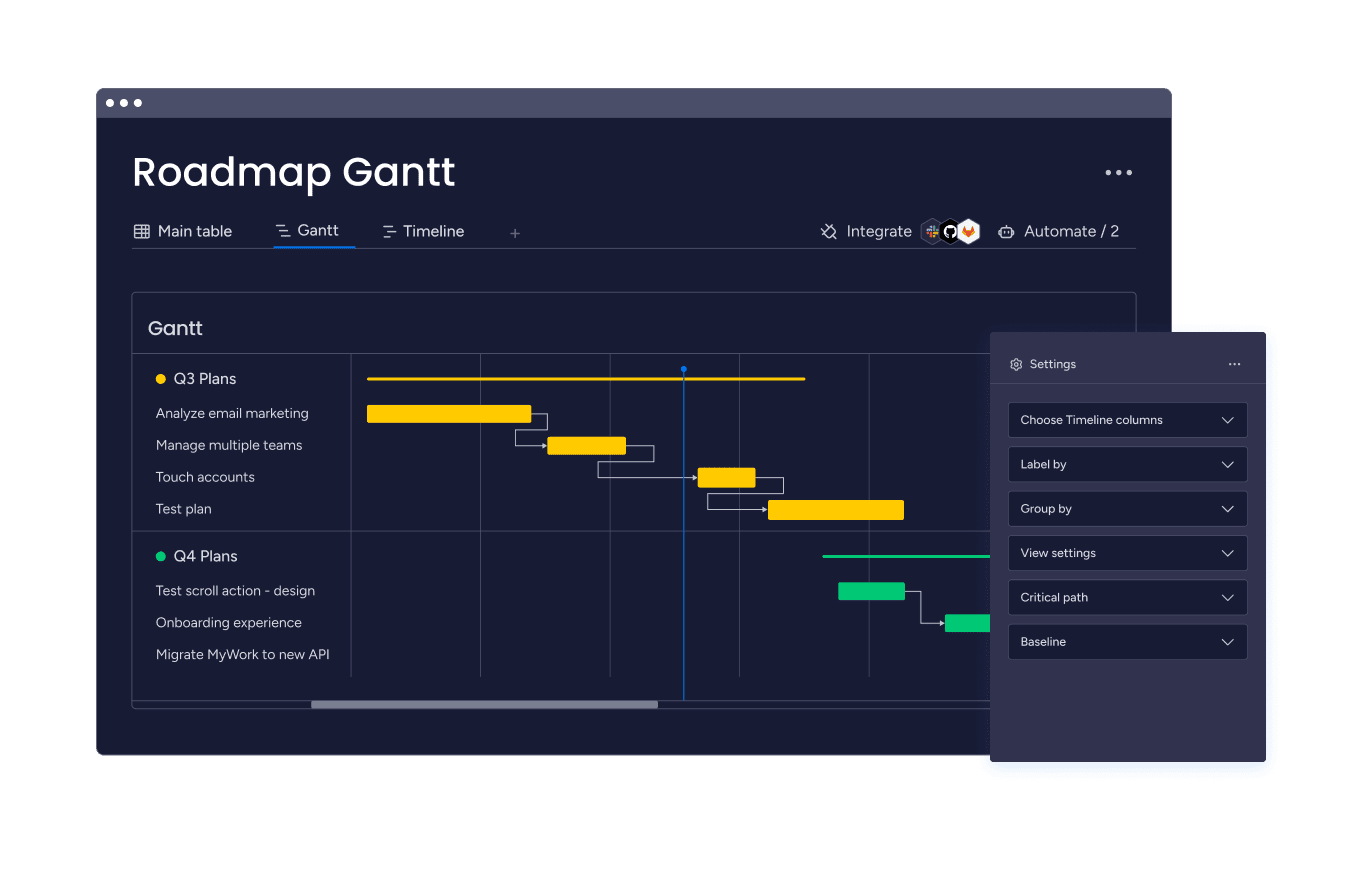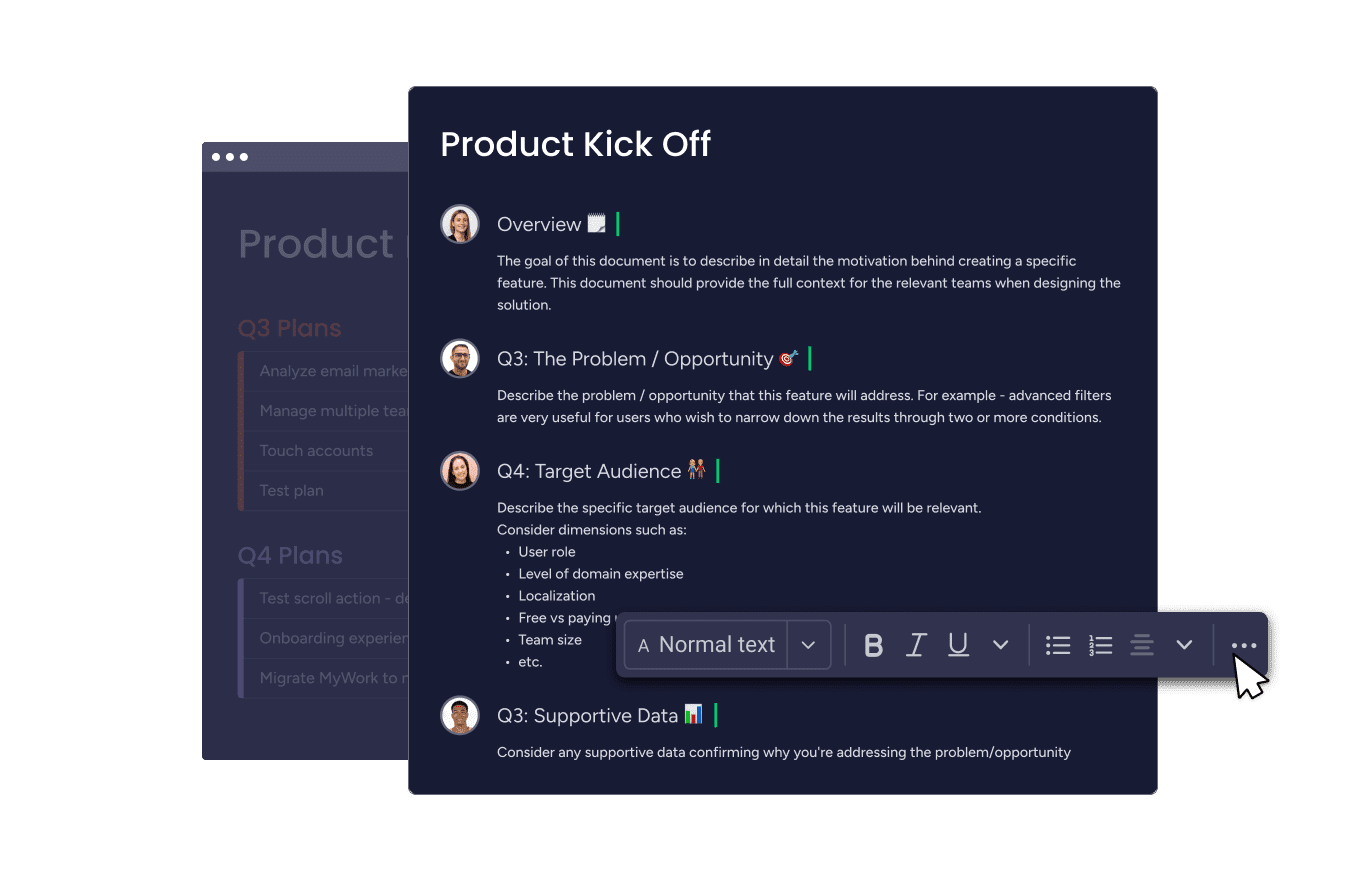How long is a piece of string? Of course, it depends. And there’s the same level of uncertainty when Agile development teams need to predict how long their next sprint will be or how much work will go into it.
Story points and hours are two common Agile metrics you might use to estimate what’s involved. But which is the right approach for your team? Our guide defines story points, compares them to the more familiar measurement of hours, and discusses the benefits of each. We’ll also explore how to plan your upcoming sprints accurately in monday dev.
Try monday devWhat are story points?
Story points are used in Agile project management to estimate how much effort is required to complete a user story or task. Also known as sprint points, you typically assign them during backlog refinement or sprint planning sessions to understand how much work to expect in your upcoming story.
Story points usually involve three main factors:
- Complexity of tasks: How difficult are they? Are you clear on their objectives? Can you compare the complexity to similar work you’ve already completed?
- Risk involved: How many teams will collaborate on the project? Are third parties also involved?
- Level of effort: How many individual tasks are involved in the story, and how much work is required for each?
How are story points calculated?
The idea of calculating story points in product management cycles is misleading, as they’re not an exact science, and there’s a lot of guesswork involved. But, the Fibonacci sequence is one popular math scale you might use to represent the risk, effort, and complexity involved in completing each story. Each number on the scale is the sum of the previous two numbers.
Example of a story point scale using Fibonacci sequencing
Although you’ll assign a numerical value to a story point, bear in mind that the relationship between story points provides more information about the effort involved in a project. For example, a scale of story points would be:
| Story point | Description | Example task |
|---|---|---|
| 1 | Very small effort, minimal complexity, and no uncertainty. | Minor bug fix, small UI change. |
| 2 | Small effort with low complexity, little risk, and few dependencies. | Simple data validation or form update. |
| 3 | Medium effort, moderate complexity, some risk, and potential minor unknowns. | Creating a basic API endpoint. |
| 5 | Significant effort, higher complexity, some risks, or dependencies potentially impacting completion. | Implementing a new feature involving multiple components. |
| 8 | High effort with substantial complexity, considerable risk, and significant unknowns. | Developing a complex integration between systems. |
| 13 | Very high effort, extremely complex, high uncertainty, or large number of dependencies. | Major architectural change or a large-scale feature overhaul. |
Note: The Fibonacci sequence is only one way to plot story points. T-shirt sizes are another method using a range like XS, S, M, L, XL, and XXL to differentiate between efforts. The goal is to assign a scale that can be used consistently and accurately.
Why use story points in Agile?
Story points support Agile teams by:
- Focusing on relative estimation: Instead of predicting exact timeframes, teams simply estimate tasks relative to one another; for example, a story point assigned a numerical value of 2 is twice as risky, complex, and demanding as a story point labeled as 1.
- Accommodating flexibility: At its core, Agile values the ability to iterate and respond to change rather than being restricted by a formal plan. Story points allow for this type of fluidity as requirements evolve. For example, if new risks are introduced into your story, you might increase the value of your story point accordingly.
- Promoting team collaboration: Story point estimation isn’t a solo pursuit. It involves input from the entire team, encouraging shared understanding and ownership of the work.
What is the relationship between story points and hours?
Story points and hours are both used by dev teams to estimate work, but they’re very different:
- Unlike story points, hours are based on a precise unit of measurement (time!)
- Hours estimation indicates how long you expect a task to take, while story points capture the overall effort required
- Story points are more subjective than estimation in hours. Time can be tracked accurately, while story points are merely a guide.
- There’s no formula to convert story points into hours. However, some Agile teams may use a platform like monday dev to plot how many story points they complete in each sprint. They’ll use this data to inform future tasks based on their past speed and performance.
What are the benefits of story points instead of hours?
Why go to the effort of assigning story points when you could just use hours as a time estimation instead? After all, hours are a universal measurement everyone can understand, while story points can feel more abstract. When comparing story points to hours, consider that:
Story points emphasize value over time
Story points shift the focus from “How long will it take?” to “What value are we delivering?” This aligns with Agile’s goal of delivering value quickly and iteratively.
Story points account for team dynamics
Different developers work at different speeds based on their skills, working styles, and available resources. Story points level out any individual differences, making the estimate a team commitment rather than a personal one.
Story points accommodate uncertainty
Story points are better suited for tasks with unknowns or varying levels of complexity, as they factor in potential risks and learning curves. For example, a task expected to take 8 hours might be longer if any unexpected issues crop up. With story points, this uncertainty is baked into the estimation.
Story points prevent overcommitment
Estimating in hours can lead to unrealistic timelines and burnout. Story points provide a buffer for unexpected challenges, making it easier and more realistic to plan future sprints.
4 challenges of using Agile story points
While story points are beneficial, they don’t hit the mark for everyone. As product manager Gianni Sawyer admits, “I can’t get excited about story points…I’ve tried.” Here are some of the challenges you might expect if you use them in your dev cycles:
- Subjectivity: Different team members may have varying perceptions of what constitutes a “3-point” story. Calibrating your story point estimation process can help you develop a consistent approach.
- Learning curve: Teams new to this Agile concept may struggle with story point estimation accuracy initially. Know that it takes time to refine the process and develop a shared understanding your Agile teams can depend on.
- Misuse as a productivity measure: Story points are not intended to gauge individual productivity. Any heavy focus on “points completed” can create unhealthy competition or pressure, leading to burnout and disengagement among your team members.
- Changing team dynamics: Any turnover among your team may impact average Agile velocity, as new members may estimate differently or require more time to complete tasks.
Manage story point estimation in monday dev
Allocating story points to each of your product backlog items isn’t something you should attempt using spreadsheets and email chains. You need a central space to keep everything streamlined and integrated with the rest of your sprint planning. That workspace is monday dev—a platform that provides everything you need to take your product from ideation to launch and beyond. Here are the features essential to your story point process:
Boost estimation efficiency with customizable templates

Choose from a range of sprint planning templates with columns for ownership, priority, status, timeline, dates, and more. This level of detail makes it a cinch to estimate the effort required for upcoming user stories based on current progress and team capacity.
Use data-driven insights for better estimations

monday dev provides a range of views, including Gantt, Kanban, Timeline, and more, enabling you to see the data that matters at a glance. You’ll quickly spot trends, patterns, and roadblocks that could influence the “risk” and “effort” of your upcoming user stories.
Visualize your work using interactive dashboards

View crucial data such as burndown charts or imported data from integrations with GitHub or GitLab that could impact your story point estimation. Pull it into your own customized dashboard using 10+ drag-and-drop widgets to give you the most accurate picture.
Collaborate with team members in real time

Enable your Agile teams to come together with the latest updates, clarifying questions, and insights that will inform your story planning. Add board comments, or conversations from email and direct messaging platforms to keep everyone on the same page about story progress.
Ready to streamline your Agile planning? Take a free trial of monday dev today.
Try monday devFAQs
Should I use story points or hours?
Choosing between story points and hours depends on your team's experience and preferences. If you value flexibility and relative estimation, story points are ideal. But, if you prefer time-based planning, then hours are the clear choice.
How many hours is 3 story points?
There's no direct conversion between story points and hours, as they measure different things. Over time, teams may develop an average "hours per point" estimate based on past velocity, but this should be used as a guideline, not a strict rule.
When should you not use story points?
Story points aren’t the best fit for teams with highly predictable or repetitive work, where time-based estimates are more accurate. Story points also have no place in individual performance evaluations.

